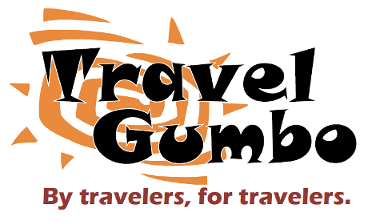I was enjoying my rafting trip through the beautiful scenery of Dinosaur National Monument. As described in my last post, we had traveled down the Green River through Lodore Canyon and were approaching the junction of the Green and Yampa Rivers. This is where the story continues.
The Green River's water level is controlled by the outflow from the Flaming Gorge Dam. There are advantages and disadvantages to this. The main advantage is that it prolongs the rafting season and provides water for irrigation. In contrast, the Yampa River is a free-flowing and undammed -- one of only a few remaining in the western USA. Its flow peaks in the late spring/early summer, and by late summer is relatively dry.
Our trip was in early June, so the Yampa was at peak flow level. I was surprised how well we could see the contrast between the two rivers' flows, which I think is well shown in the photos below. The cloudy gray water of the free-flowing Yampa contrasts with the clear blue of the Green River.
(Junction of the Green and Yampa Rivers)
Our speed picked up considerably after this junction, and the scenery also changed from one of red canyons to the more usual whites, tans and browns of the southwestern desert. Such an impressive place! The photos below are more-or-less presented in the sequence they were taken, showing how the scenery changed along this part of the route.
We spotted a bald eagle's nest in a tree along the river's bank. I'm always surprised by the size and weight of these nests.
We were to spend two half days on this stretch of the river, even though it represented more than half of the distance we were covering on this rafting trip.
(Unusual faulting pattern in this mountain)
(narrowing of the river into a canyon)
It was very hot the afternoon we arrived at our final camp, but it cooled down nicely at night and we had a beautiful morning there. The photo below was taken as the sun crept over the mountains.
This was the view across the river from our final camp:
A doe wandered by on the opposite bank as I was looking around, one of several deer we spotted on the trip.
During our last morning on the river, we temporarily left the tall peaks behind us and entered a rather flat and winding stretch of the river.
We passed several cliffs like the one shown below, and saw some native pictographs etched into the flat surface of the rock. Unfortunately, we were moving too quickly for my photos to turn out well.
I had better luck photographing some of the swallow nests built into the rock face, however...
Below is Split Mountain, marking our final stretch of our journey. Beyond this the river picks up speed and there are a lot of rapids.
We passed a herd of bighorn sheep scampering along the cliff -- the only one I was able to get a photo of was this cute little lamb.
I was in a paddle boat this day (where everyone paddles to power the boat, as opposed to the large OAR rafts where you sit back and let the guides do the work), so I had limited opportunity to take photos on the final stretch of the river. Below is a sampling of what we saw...
Our journey ended just a few miles from where these photos were taken. We landed on a beach, were loaded into a van and driven back to the OARS basecamp in Vernal, where we said goodbye to our guides and fellow travelers.
I really enjoyed this trip. Rafting is a great way to get into the backcountry and see some wonderful scenery. It is wonderful to experience the quiet, the wildlife, the clear star-filled nights.

Comments (2)